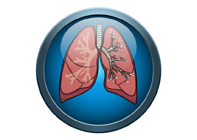Pulmonary Fibrosis: new treatment but no cure
Posted on September 1, 2016 by bob in Health, In Every Life
September is Global Pulmonary Fibrosis Awareness Month. This rare, incurable, and often difficult to diagnose disease comes in the form of either  Pulmonary Fibrosis (PF) or Idiopathic Pulmonary Fibrosis (IPF). The intent of PF Awareness Month, designation by members of the Pulmonary Fibrosis Foundation, is to:
Pulmonary Fibrosis (PF) or Idiopathic Pulmonary Fibrosis (IPF). The intent of PF Awareness Month, designation by members of the Pulmonary Fibrosis Foundation, is to:
— increase awareness;
— encourage individuals with symptoms to seek healthcare, obtain more rapid diagnosis and treatment, and better manage their care;
— advocate for research funding for additional treatment.
Increased awareness of family members and healthcare providers can promote earlier diagnosis and help to better individualize treatment.
In PF, oxygen delivery is affected when lung tissue thickens, then becomes stiff and scarred (fibrotic). Causes of PF include:
— exposure to agents that damage the lung;
— side effects of medications;
— smoking;
— viral or bacterial lung infections;
— acid reflux disease (GERD);
— genetics;
— systemic autoimmune diseases such as scleroderma, lupus, or rheumatoid arthritis.
When the cause is not known, it is called IPF. Both PF and IPF are progressive diseases affecting the lungs, occurring primarily (but not exclusively) in older adults. The lungs are comprised of air sacs (alveoli) from which oxygen is transferred to circulating blood and then to all other areas of the body. Interference with oxygen exchange by the stiffening and scarring can contribute to reduced function of other body organs that receive inadequate levels of oxygen. Other lung diseases can have similar symptoms, contributing to difficulty in prompt and accurate diagnosis.
IPF is a subtype of idiopathic interstitial pneumonia, in the pattern of unusual interstitial pneumonia. One researcher estimated that IPF affects one of every 200 adults over age 65 in the U. S. (Raghu, et al, 2014), usually between age 50 and 70, and is expected to increase as people live longer and diagnosis becomes more accurate. Identification of one form, called familial pulmonary fibrosis (FPF), suggests that some genes may predispose to developing IPF.
Shortness of breath is the most common symptom. Individuals and their families may not report this, believing it is due to normal changes of aging or physical de-conditioning. Other symptoms include:
— persistent dry cough;
— fatigue, weakness, chest discomfort;
— reduced appetite and weight loss.
Healthcare providers should be informed of these symptoms, which should prompt careful history for potential causes and several tests to help identify the actual cause. Over time lung damage occurs, reducing oxygen transport to the body.
Although there is no cure, during the past two years, two new medications have been approved to slow the progression of IPF. Information about questions to ask your healthcare providers, diagnostic tests and possible treatments can be found at the website of the Pulmonary Fibrosis Foundation (PFF) and by contacting the Montgomery IPF Support Group. Video information is available on the “Every Breath Counts” film (see references below).
Taking an active role in your health by documenting symptoms to discuss with your healthcare provider, asking questions, and contacting advocacy groups can help with early identification and management for yourself, and potentially help others.

Arlene Morris
Arlene H. Morris, EdD, RN, CNE is Professor of Nursing, AUM School of Nursing. Reach her at amorris@aum.edu.
References
“Every Breath Counts,” www.everybreathcountsfilm.com;
Montgomery, AL Idiopathic Pulmonary Fibrosis Support Group, mfuentes@baptistfirst.org;
Pulmonary Fibrosis Foundation (PFF) http://www.pulmonaryfibrosis.org.









